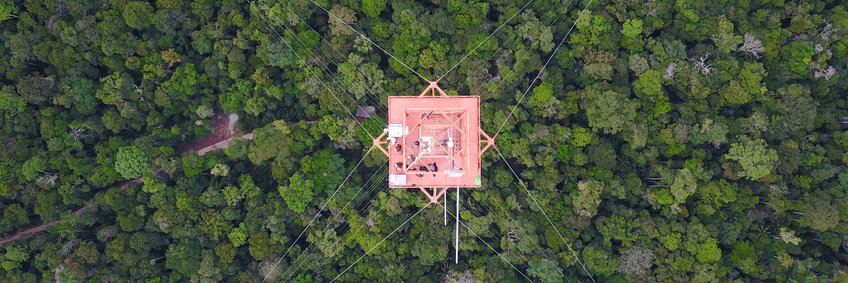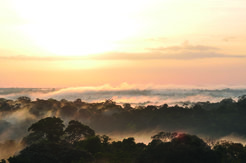
Water and greenhouse gas dynamics with isotopes
In the Amazon basin, moisture is transported westwards from the Atlantic Ocean (~1000 km east of ATTO) and precipitation is continuously recycled by means of evapotranspiration, becoming more important the further west in the basin the air masses are located (Spracklen et al., 2012). This concept is also known as the “Flying Rivers”.

We can study this by looking at rainforest evapotranspiration (ET) and its partitioning into transpiration (T) and evaporation (E). In particular, we measure stable water isotopes for precipitation, ET, T and E to gain information of water (re-)cycling on the regional scale. In addition, we will monitor dewfall, and sample fog and soil water isotopes, coupled with measurements of sap flux, to better constrain the main sources of water for the tree. This is especially interesting in the dry season, when tree have only two sources of water foliar water and deep soil water due to longer intervals between precipitation events.
The quantification of both precipitation recycling and ET partitioning will improve the current water budget for the central Amazon rainforest. Additionally, we expect that the ET partitioning will improve our estimates of water use efficiency in the central Amazon rainforest. Assessing dewfall events will also allow us to better understand forest-atmosphere gas exchanges (H2O, CO2, CH4, etc.) on temporal scales from diurnal to interannual.
